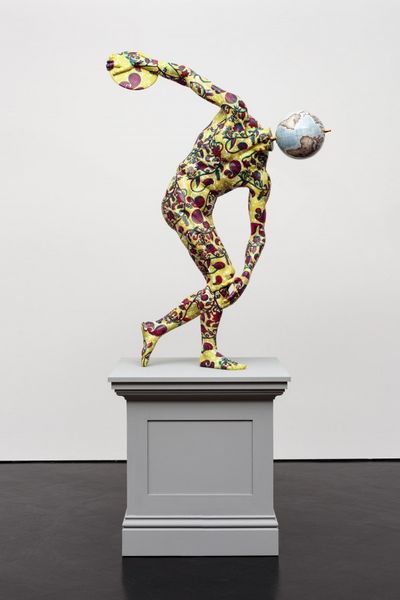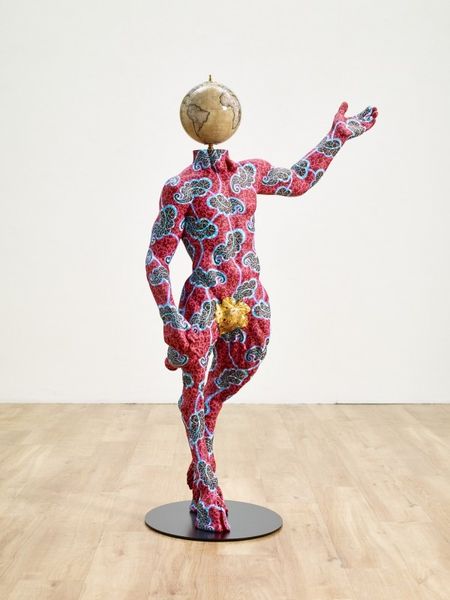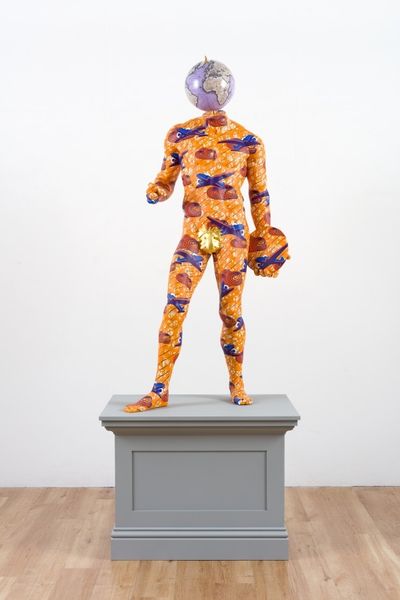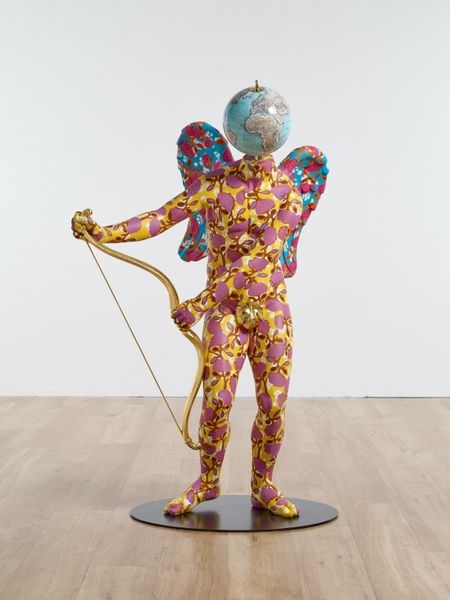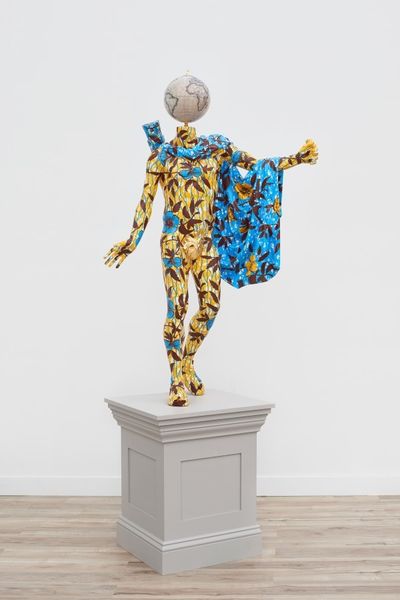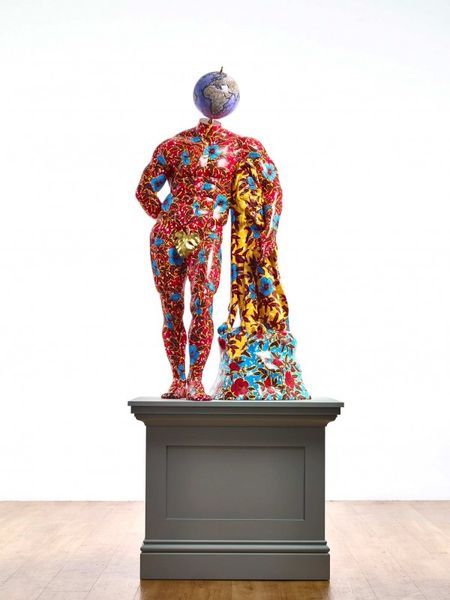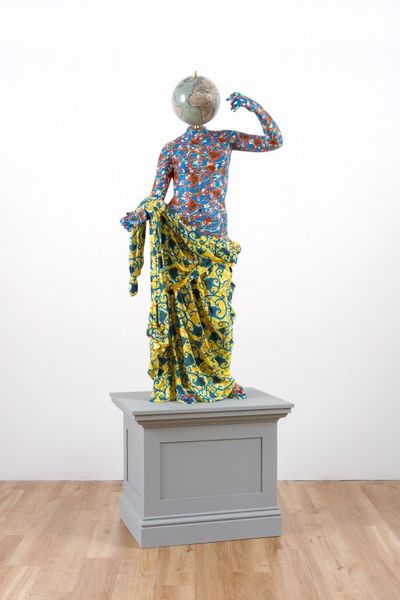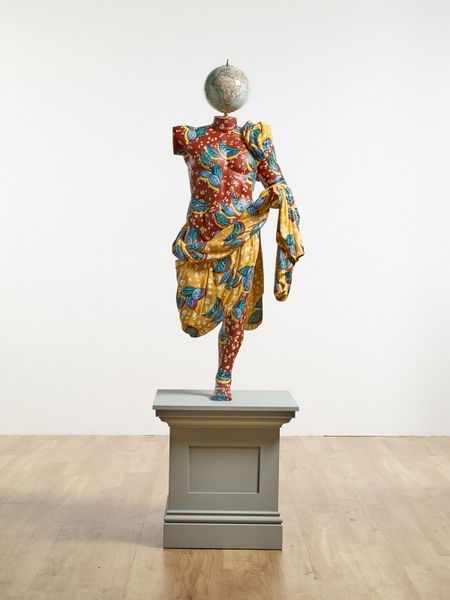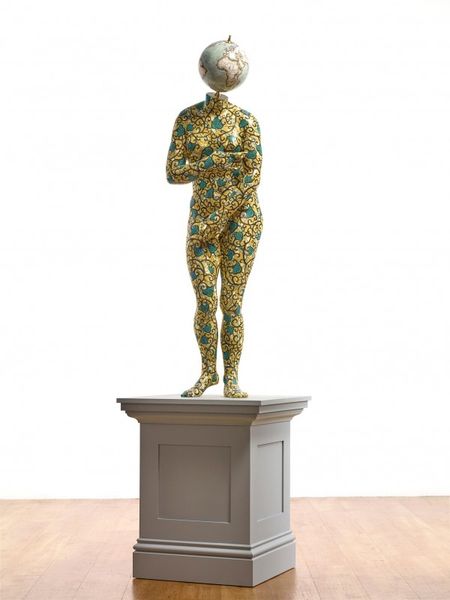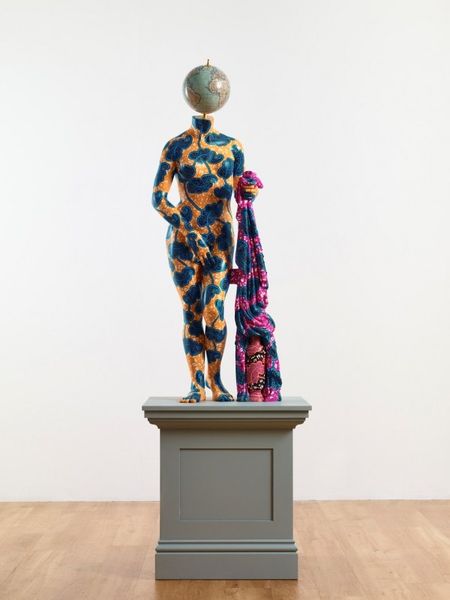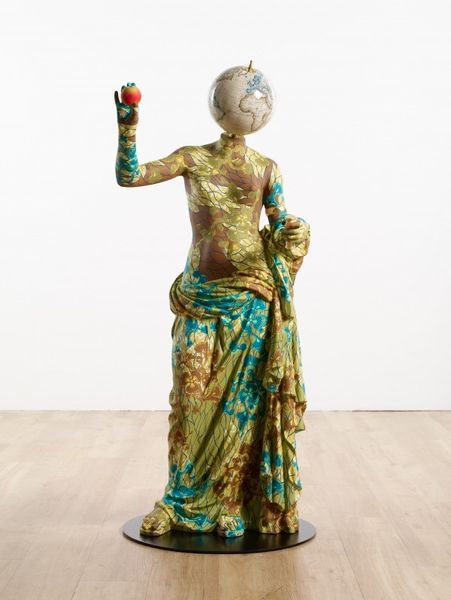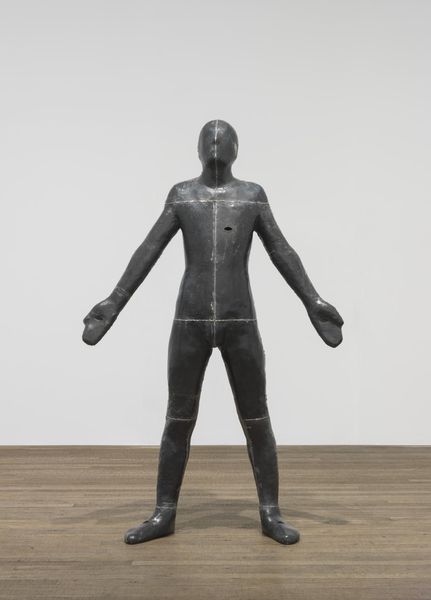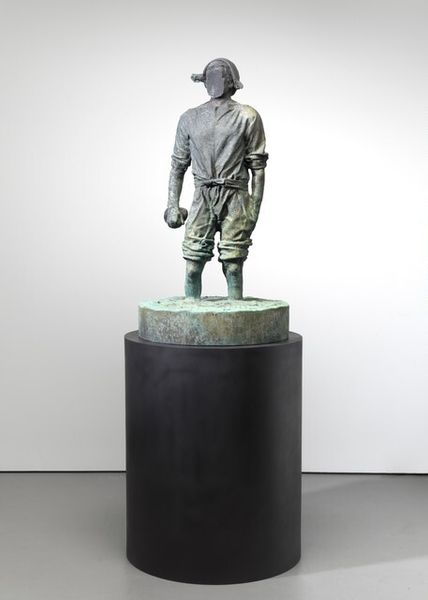
sculpture, marble
#
statue
#
sculpture
#
appropriation
#
figuration
#
11_renaissance
#
sculpture
#
marble
Copyright: Yinka Shonibare,Fair Use
Editor: So, this is Yinka Shonibare's 'DAVID (AFTER MICHELANGELO)' from 2016, a marble sculpture. It's quite striking! The colorful fabric pattern is unexpected on such a classical form. How do you interpret this work in light of its historical and cultural references? Curator: This sculpture is fascinating because it actively engages with art history and questions the narratives that it constructs. Shonibare's choice of the David, a symbol of Western art and ideals of the Renaissance, is deliberate. The figure is patterned with what appears to be African fabric. Editor: I can definitely see that tension. The bright patterns feel so different from the serious and stoic original. Curator: Precisely! These patterns, often associated with Africa, were actually inspired by Indonesian batik textiles traded by Dutch merchants in the 19th century. They represent a complex history of cultural exchange, colonialism, and globalization, all intersecting. This specific textile tradition creates another narrative questioning of authenticity and origin in both African and European histories. Editor: Wow, so it's layering multiple histories! Also the fact that the David’s head is a globe. What’s that about? Curator: It’s almost mocking, don't you think? That world, with David’s hand resting powerfully, but gently over its sphere; suggesting questions over how far European influences will reach over cultures not of its origins. But even that consideration sits upon layers, because David itself, embodies both Biblical past and cultural influences from further afield still. Editor: I'm starting to understand how the placement of art changes perceptions of its meaning. Curator: Absolutely. By placing this sculpture in a museum, or even just calling it 'art', we immediately place it within a system of value, history, and power. Shonibare invites us to consider who is included and excluded from that system and what voices are prioritized. Editor: I never considered it that way. Thinking about how artwork is viewed from different viewpoints. Thank you! Curator: My pleasure. This dialogue between cultures and artistic traditions highlights the changing face of both historical views and their relation to the current political arena, urging a re-evaluation.
Comments
No comments
Be the first to comment and join the conversation on the ultimate creative platform.
